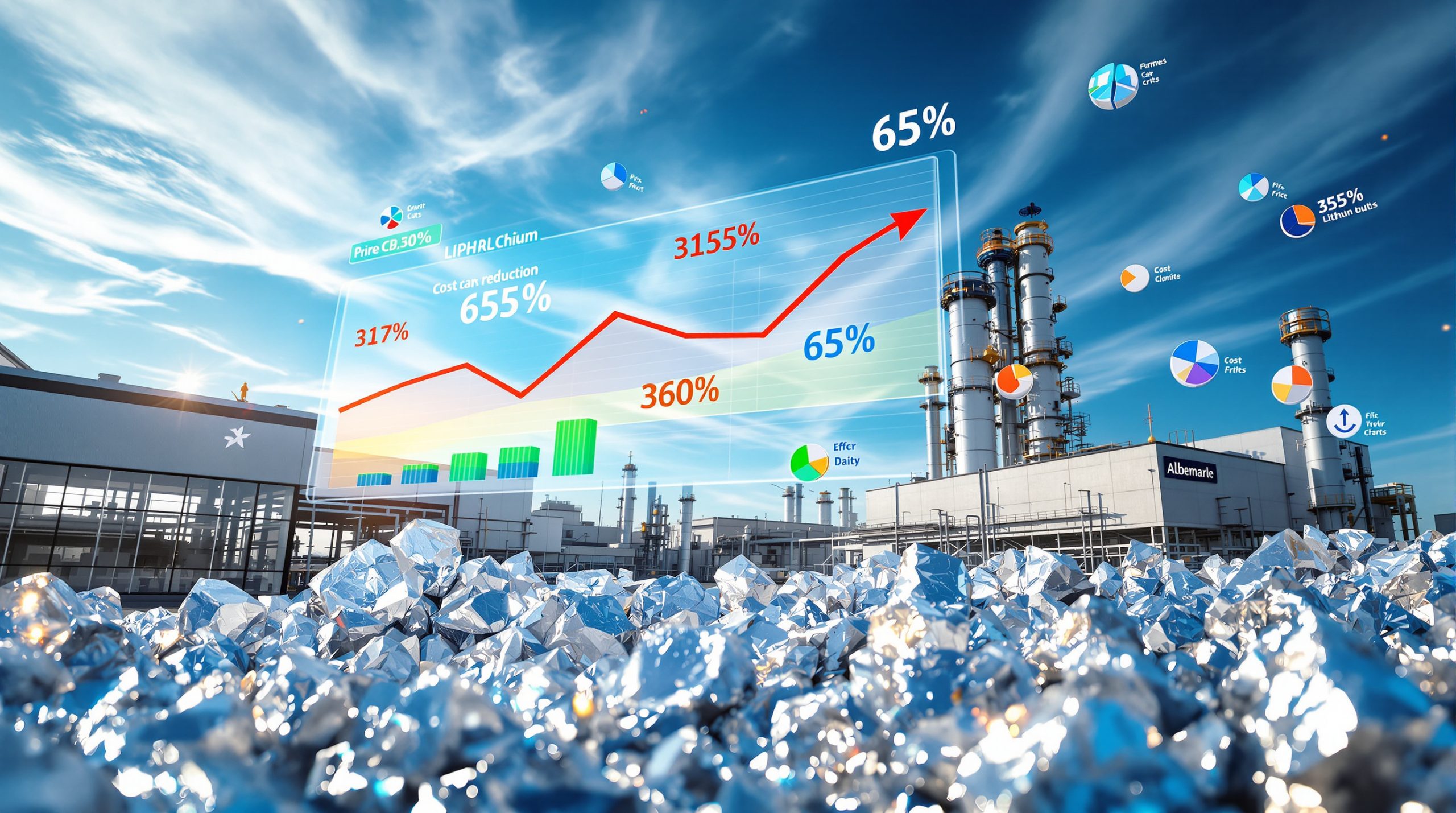Industrial Demand Surge Transforms Silver Production Dynamics
The global silver production landscape underwent significant transformation in 2025, with industrial applications driving unprecedented demand that prompted mining operations to accelerate output across multiple regions. Furthermore, the silver market squeeze created additional pressure on producers to optimise their silver production increase strategies. Solar panel manufacturing emerged as the dominant force behind this industrial consumption surge, requiring substantial increases in silver production to meet photovoltaic sector requirements.
Electric vehicle manufacturing simultaneously created additional pressure on silver supplies, with battery technologies and charging infrastructure demanding high-conductivity materials. Electronics manufacturers expanded their silver requirements as technological advancement accelerated, while renewable energy applications beyond solar panels contributed to growing industrial consumption patterns.
Key Industrial Applications Driving Production:
- Photovoltaic cell manufacturing requiring specialised conductive pastes
- Electric vehicle battery systems and charging networks
- Advanced electronics requiring superior conductivity properties
- Grid modernisation projects demanding enhanced electrical performance
- Energy storage technologies incorporating silver-based components
Mining operations responded to these market dynamics by optimising extraction processes and expanding throughput capabilities. Americas Gold and Silver Corporation demonstrated this trend, achieving 765,000 ounces of silver production in Q3 2025, representing a remarkable 98% increase compared to 386,000 ounces in Q3 2024. The company's operational improvements at the Galena Complex included enhanced underground development rates, reintroduction of long hole stoping methods, and infrastructure upgrades to the No. 3 Shaft skipping capacity.
Regional Production Leadership Drives Global Supply Growth
North American Operations Spearhead Expansion Efforts
United States mining operations contributed meaningfully to global silver production increase through systematic efficiency improvements and strategic infrastructure investments. The domestic mining sector benefited from operational optimisation initiatives that maximised output from existing facilities whilst maintaining cost discipline.
The Galena Complex in Idaho exemplifies this operational excellence approach. Despite completing a planned 10-day shutdown during Q3 2025 for Phase 1 upgrades to the No. 3 Shaft, the facility achieved an 11% sequential production increase from Q2 2025. These improvements resulted from comprehensive operational analysis, including time studies, engineering optimisation, and mining method adjustments.
Strategic antimony production added significant value streams to North American silver operations. Galena represents the only current antimony producer in the United States, yielding 447,466 pounds of antimony year-to-date 2025 alongside 615,817 pounds of copper. This multi-metal approach provides economic resilience and addresses critical materials supply chain concerns.
The tetrahedrite ore composition at Galena demonstrates remarkable consistency, maintaining a Sb:Cu ratio averaging 0.73 throughout 2025. This predictable byproduct relationship enables accurate financial modelling and long-term revenue planning for mining operations focused on silver production increase strategies.
International Mining Regions Contribute to Supply Growth
Peru's mining sector continued supporting global silver production through operational expansions and processing technology improvements. As historically one of the world's largest silver producers, Peruvian operations maintained their contribution to meeting growing industrial demand through systematic capacity enhancements.
Mexico's mining operations, including facilities like the Cosalá Operations in Sinaloa, demonstrated production improvements through strategic mine plan progression. The transition into higher-grade mining areas, such as the EC120 zone at Cosalá, supported sequential production improvements whilst maintaining operational efficiency standards.
Operational Excellence Enables Sustainable Production Increases
Technology Integration Maximises Extraction Efficiency
Modern mining operations achieved silver production increase through advanced extraction methodologies rather than simply expanding mining volumes. In addition, modern mining technology enabled digital monitoring systems to optimise production workflows whilst automated equipment reduced operational costs and improved safety metrics.
The implementation of long hole stoping at facilities like Galena provided greater flexibility in ore extraction whilst potentially improving recovery rates. Enhanced processing facilities increased metal purity levels and overall production throughput, contributing to measurable output gains.
Technological Improvements Supporting Production Growth:
- Advanced ore processing systems improving metal recovery rates
- Automated mining equipment reducing operational variability
- Digital workflow optimisation systems maximising productivity
- Infrastructure upgrades increasing material handling capacity
- Fleet modernisation programmes improving equipment reliability
Byproduct Optimisation Strategies Enhance Economic Returns
Multi-metal recovery operations maximised silver extraction whilst capturing valuable byproducts including copper, lead, and antimony. This approach improved overall project economics and provided revenue diversification that supported continued operational investments.
Lead and zinc mining operations integrated silver recovery processes that previously might have been overlooked. Gold mining facilities enhanced their silver capture capabilities, recognising the value proposition of comprehensive metal recovery from processed ore.
Copper operations incorporated specialised silver extraction processes that complemented primary metal production objectives. This systematic approach to byproduct recovery contributed substantially to overall silver production increase across multiple mining regions.
Production Growth Addresses Critical Supply Constraints
The structural supply deficit in silver markets continued through 2025 despite production improvements, with industrial demand growth consistently outpacing mining capacity expansions. According to the Silver Institute's supply-demand analysis, industrial consumption now represents 81% of total mined silver, creating sustained pressure on available supplies.
Investment demand competed with industrial consumption for available silver supplies, creating sustained price support for producers. However, the fundamental challenge remains that most silver originates as a byproduct from other mining operations, limiting supply responsiveness to price signals.
| Supply-Demand Dynamic | 2025 Impact | Market Response |
|---|---|---|
| Industrial consumption growth | 81% of total mined silver | Sustained price levels above $30/oz |
| Investment demand surge | Strategic stockpiling activity | Supply constraint pressures |
| Byproduct supply limitations | Limited supply elasticity | Producer operational optimisation |
| Recycling contributions | Relatively stable input | Continued reliance on mined supply |
The byproduct nature of silver production limited supply responsiveness to price signals, as most silver originates from copper, lead, zinc, and gold mining operations. This structural characteristic created supply inelasticity that supported sustained pricing levels whilst encouraging existing operations to maximise silver recovery rates.
Strategic stockpiling by governments and institutions added additional demand pressure beyond industrial consumption requirements. This combination of factors maintained supply deficit conditions despite meaningful production increases from optimised mining operations.
Investment Performance Metrics Reflect Production Success
Mining Company Financial Improvements
Silver production increase translated into improved financial performance for specialised mining companies through operational leverage benefits and enhanced revenue generation. Companies with significant silver exposure experienced margin expansion as higher volumes spread fixed operational costs across increased production.
Americas Gold and Silver maintained a cash balance of $39 million as of September 30, 2025, with an additional $50 million available through undrawn credit facilities. This financial positioning supported continued capital deployment for operational improvements and growth initiatives.
Lead production at Galena increased 23% sequentially from 1.9 million pounds in Q2 2025 to 2.3 million pounds in Q3 2025, demonstrating operational leverage across multiple metal streams. These improvements occurred despite planned maintenance activities that reduced available operating time during the quarter.
Strategic Metal Value Recognition
The critical materials classification of antimony enhanced the strategic value proposition for silver producers with co-product capabilities. Supply chain security concerns supported domestic production initiatives and encouraged long-term supply contracts with industrial consumers.
Technology sector partnerships with mining operations provided revenue stability through multi-year purchasing agreements. These relationships recognised the essential nature of silver in advanced manufacturing processes and supported continued investment in production capacity.
"Mining operations achieving silver production increase through byproduct optimisation benefit from multiple revenue streams that provide economic resilience during commodity price volatility periods."
Production Limitations and Future Challenges
Regulatory and Environmental Constraints Impact Growth
Permitting delays continued extending project development timelines across multiple jurisdictions, limiting the ability of new operations to contribute to silver production increase in the near term. Environmental compliance requirements increased operational expenses whilst community relations considerations affected project approval processes.
Water usage restrictions in arid mining regions presented operational challenges that required technological solutions and increased capital investment. Skilled labour shortages in specialised mining roles limited the pace of operational expansion despite favourable commodity pricing conditions.
Geological and Economic Realities Constrain Expansion
Ore grade decline at mature mining operations required higher capital investment to maintain production levels, whilst deeper extraction increased infrastructure costs and technical complexity. Remote deposit locations demanded substantial upfront investment in transportation and processing infrastructure.
Operational Constraints Limiting Production Growth:
- Declining ore grades requiring increased processing volumes
- Infrastructure limitations at remote mining locations
- Skilled workforce availability in specialised roles
- Capital intensity requirements for deep extraction
- Environmental compliance and community relations costs
The geological reality of finite ore reserves meant that production increases from existing operations represented acceleration of extraction rather than permanent supply additions. This temporal aspect of production enhancement created long-term supply considerations for strategic planning purposes.
What Role Does Silver Play in Energy Transition?
Renewable energy infrastructure development created sustained demand growth that supported continued investment in silver production increase initiatives. Energy transition metals like silver became increasingly critical as solar panel manufacturing consumed increasing quantities through global installation acceleration.
Solar panel manufacturing now requires 10-20 grams of silver per panel for conductive pastes, with global installations reaching record levels through government incentives and cost competitiveness. Wind turbine electrical systems required high-conductivity materials for power generation and transmission components.
Energy storage technologies incorporated silver-based materials in battery systems and power electronics that enabled grid stabilisation and renewable energy integration. Electric vehicle industry expansion created additional demand through battery technologies, charging infrastructure, and autonomous vehicle sensor systems.
Energy Transition Silver Applications:
- Photovoltaic cell conductive pastes requiring 10-20 grams per panel
- Wind turbine electrical components and power transmission systems
- Battery management systems in energy storage applications
- EV charging infrastructure electrical connections
- Grid modernisation projects requiring enhanced conductivity
These applications demonstrated silver's essential role in achieving renewable energy transition objectives, creating demand patterns that extended beyond traditional industrial uses and supported continued investment in production capacity expansion.
How Should Investors Evaluate Silver Producers?
Operational Performance Assessment
Investors evaluating silver production companies should analyse production growth rates relative to industry benchmarks whilst assessing cost management effectiveness and operational efficiency improvements. For guidance on evaluation methodologies, mining investment strategies provide comprehensive frameworks for assessing producer performance.
Reserve replacement ratios indicate long-term sustainability potential for continued production growth. Cash flow generation capacity at various silver price levels provides insight into operational resilience during commodity price volatility.
Americas Gold and Silver demonstrated these investment characteristics through Q3 2025 performance, achieving sequential production growth whilst maintaining financial flexibility through available credit facilities. The company's strategic positioning as the sole U.S. antimony producer added value beyond precious metals exposure.
Financial Strength Indicators for Growth Sustainability
Capital allocation efficiency for growth investments determines whether companies can sustain silver production increase without compromising financial stability. Debt service coverage ratios during production expansion phases indicate management's ability to balance growth investment with financial prudence.
Key Investment Evaluation Metrics:
- Production growth sustainability and cost per ounce trends
- Reserve quality and mine life extension potential
- Byproduct contribution stability and strategic value
- Capital deployment efficiency and return on investment
- Management track record in operational optimisation
Dividend sustainability through commodity price cycles provides insight into management's long-term value creation strategy versus short-term profit maximisation approaches.
Market Price Dynamics and Production Impact
Silver production increase provided temporary supply relief that moderated price volatility whilst sustained demand growth continued supporting price levels above production cost thresholds. Recent analysis from mining industry experts indicates that forward price curves reflected market expectations for continued supply constraints despite operational improvements.
Currency fluctuations affected international trade pricing and created regional variations in production economics. Hedging strategies employed by producers and consumers influenced spot market dynamics and provided price discovery mechanisms for future production planning.
Producer announcements of operational improvements or expansion plans created investor sentiment changes that affected short-term price movements. However, the fundamental supply-demand imbalance continued supporting higher price levels that encouraged continued operational optimisation efforts.
Market Price Support Factors:
- Industrial consumption growth outpacing supply additions
- Strategic stockpiling by governments and institutions
- Limited supply elasticity from byproduct nature
- Infrastructure investment in renewable energy
- Technology sector partnerships providing demand stability
Disclaimer: Silver market analysis involves inherent uncertainties and speculative elements. Production forecasts and price projections represent estimates based on available information and should not be considered guaranteed outcomes. Investment decisions should consider multiple factors including operational risks, commodity price volatility, and regulatory changes that may affect mining operations and silver market dynamics.
The silver production increase observed in 2025 reflects operational optimisation success rather than fundamental resolution of supply-demand imbalances. Long-term investors should evaluate companies based on sustainable operational improvements and strategic positioning rather than short-term production acceleration that may not represent permanent capacity additions.
Want to Capitalise on Silver Market Opportunities?
Discovery Alert's proprietary Discovery IQ model delivers instant notifications when ASX-listed silver miners announce significant discoveries, enabling investors to identify actionable opportunities ahead of the broader market. Explore how major mineral discoveries have historically generated substantial returns, then begin your 30-day free trial today to secure your market-leading advantage.




